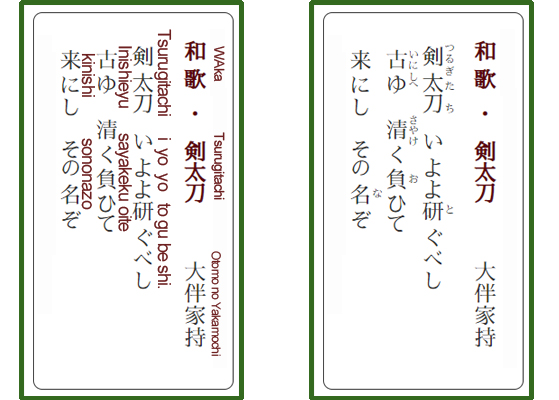Tsurugitachi
Tsurugitachi, iyoyo, togubeshi.
Inishieyu, sayakeku oite, kinishi, sononazo

Tsurugitachi, iyoyo, togubeshi.
Inishieyu, sayakeku oite, kinishi, sononazo
The author, Otomo no Yakamochi (718-785) was the eldest son of Otomo no Tabito, a powerful chief councilor of state who served the Yamato government in the Nara period. Born into the family of a military officer at the Imperial Court in times when the so-called “samurai” were yet to emerge, he was widely active both as a military man and as a poet. Otomo no Yakamochi is regarded as one of the “thirty-six major poets” of Japan, many of whose works are included in the Manyoshu, the oldest existing collection of classical Japanese poems. (A passage in the Manyoshu, by the way, is said to be where the recently introduced new era name “reiwa” originates from.)
At the time, swords were used as weapons and at once also as ritual tools for expelling evil and impurity, and thereby restoring purity. This poem, Otomo composed as a lesson to his descendants as to “how samurai are supposed to behave so that the names of their noble families are not obscured.”
As a choreography example, the performer may enter the stage in the style of a stately samurai, and in the first half, express through resolute movements the sublimity of the sword and the gallantness of Otomo no Yakamochi. In the second half, we would then show some strokes and other skills with the sword while facing an (imaginary) enemy, before quietly walking off the stage. For the performance of this work, even when using a regular katana, choreographies often include elements that focus on the use of an older tachi (or haito ) type of sword.